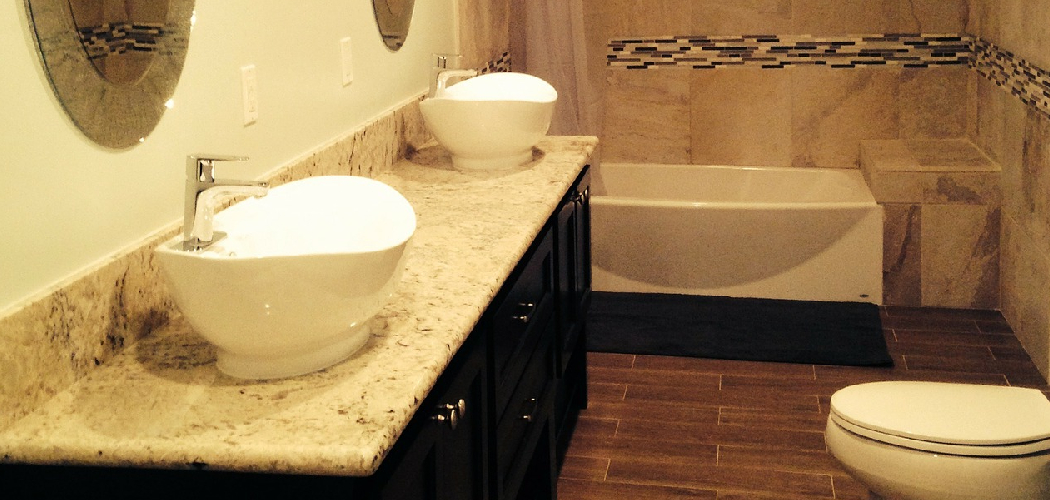Marble floors are a beautiful and luxurious addition to any bathroom, but they require regular cleaning and maintenance to keep them looking their best. You can easily clean your marble floors without damaging them with the right tools and techniques.
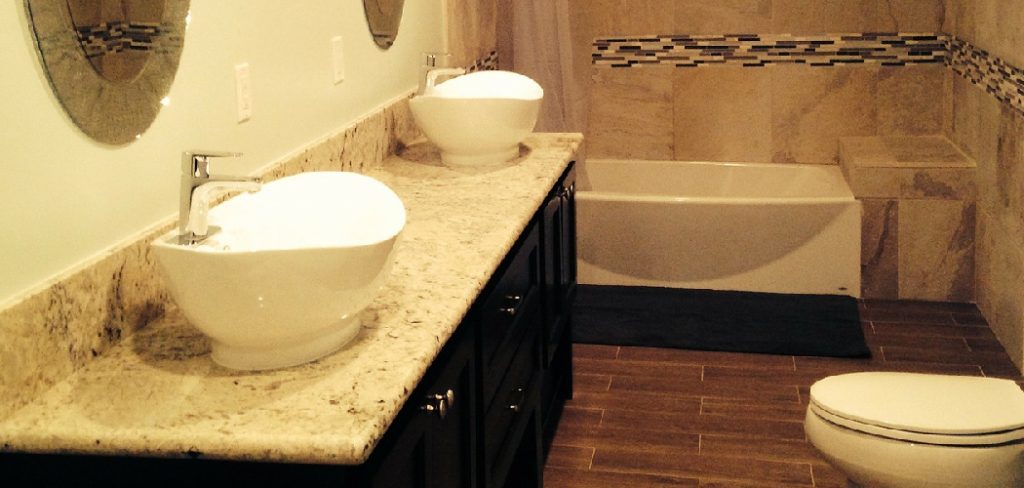
This guide will explain how to clean marble floors in bathrooms. From basic daily maintenance to deep cleaning, we have you covered. So, let’s get started!
Understanding Marble and Its Characteristics
Before we begin the cleaning process, it’s important to understand the marble’s characteristics. Marble is a natural stone known for its unique patterns and color variations. It is also porous, meaning it can absorb liquids and stains if not properly sealed. Marble is also prone to scratching and etching from acidic substances like vinegar or lemon juice.
To protect your marble floors and keep them looking their best, it’s important to follow the right cleaning methods.
Tools and Materials You Will Need to Clean Marble Floors in Bathrooms
- Soft microfiber mop or cloth
- Neutral pH cleaner specifically designed for marble surfaces
- Warm water
- Bucket
- Sponge or soft-bristled brush
- Stone sealer (optional)
- Protective gloves (optional)
- Soft towels or a mop for drying
11 Best Ways on How to Clean Marble Floors in Bathrooms
1. Daily Dusting and Sweeping:
Dust and sweep your marble floors daily to keep them looking clean and shiny. This will prevent dirt, dust, and other debris from getting ground into the marble’s surface. Staying on top of daily dusting is especially important if you have a pet, as their nails can scratch the marble. This step is an essential part of preventing unnecessary damage to your floors. If you have a busy schedule, invest in a robotic vacuum to do the job for you.
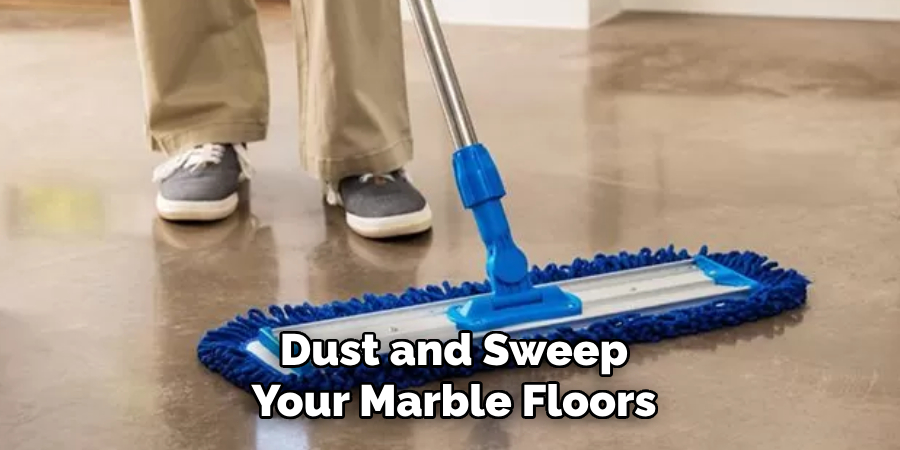
2. Spot Cleaning:
In addition to daily dusting, it’s important to spot-clean any spills or stains as soon as they happen. Marble is porous, so if left unattended, liquids can seep into the stone and cause permanent staining. Use a soft cloth or paper towel to blot the spill, rather than wiping it, which can spread the stain. For tougher stains like makeup or toothpaste, use a mild cleaner specifically designed for marble surfaces. Make sure to rinse the area thoroughly with warm water and dry it immediately.
3. Mopping with a Neutral pH Cleaner:
Mix warm water and a neutral pH cleaner specifically designed for marble surfaces in a bucket according to the manufacturer’s instructions for regular cleaning. Dip a soft mop or cloth into the solution, wring it out well, and gently mop the floors. Avoid using acidic cleaners like vinegar or lemon juice, as they can cause etching on marble surfaces. Use a steam mop for quick and easy cleaning if you have a larger bathroom.
4. Deep Cleaning with a Soft-Bristled Brush:
Use a soft-bristled brush or sponge to gently scrub the marble floors with the neutral pH cleaner solution for deeper cleaning. This will help remove any dirt or grime that has become embedded in the surface of the marble. Be gentle and avoid using harsh scrub brushes or scouring pads, as they can scratch the marble. This step should be done occasionally rather than daily.
5. Drying the Floors:
After mopping or deep cleaning, it’s important to dry the floors thoroughly with a soft towel or mop. This will prevent any water spots from forming on the marble’s surface. Make sure to also dry along the edges and corners of the room where water may collect. If you have a large bathroom, consider using a fan or opening windows to help speed up drying.
6. Using a Stone Sealer:
You can apply a stone sealer every few months to protect your marble floors from stains and moisture. This will help create a barrier on the surface of the marble and prevent liquids from penetrating into the stone. Follow the manufacturer’s instructions and make sure to choose a sealer specifically designed for marble. Using a stone sealer is optional, but it can help maintain the beauty of your marble floors for longer.
7. Cleaning Grout Lines:
If your bathroom has marble tile with grout lines, make sure to clean them regularly as well. Use a soft-bristled brush and warm water to scrub the grout lines gently. Avoid using acidic cleaners or harsh chemicals, as they can damage both the grout and marble. You can also use a natural mixture of baking soda and water to create a paste for tougher stains on grout lines. This step should be done more frequently in high-traffic areas of the bathroom.
8. Preventing Etching:
As mentioned earlier, acidic substances can cause etching on marble surfaces. To prevent this, make sure to quickly clean up any spills or splatters from acidic liquids like vinegar, lemon juice, or even certain skincare products. Also, avoid using harsh cleaning products or abrasive materials on your marble floors. Instead, stick to gentle cleaners and soft cloths for regular maintenance.
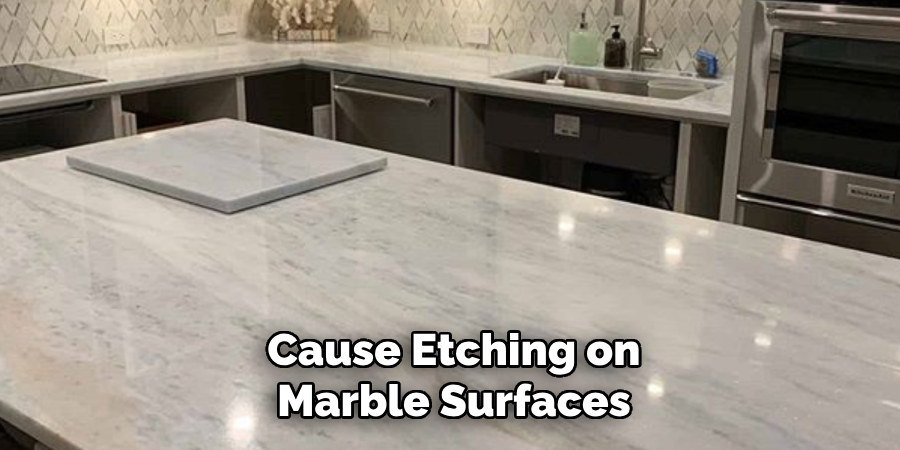
9. Avoiding Heavy Furniture:
Marble is a strong natural stone, but heavy furniture can still damage it. To prevent scratches or cracks, use felt pads under the legs of your furniture or invest in furniture coasters. This will help distribute the weight and protect your marble floors. Also, avoid dragging furniture across the floor, which can cause scratches.
10. Using Doormats:
Another way to protect your marble floors is by placing doormats at entryways leading into your bathroom. This will help trap dirt and debris from shoes before it gets tracked onto the marble floors. Make sure to regularly shake out or wash the doormats to prevent them from getting too dirty and causing more harm than good. Using doormats can also help reduce the dust and dirt accumulating on your floors, making daily dusting easier.
11. Professional Cleaning and Maintenance:
While regular maintenance is key to keeping your marble floors clean, having them professionally cleaned and maintained every few years is also a good idea. This will help remove any deep-seated stains or damage and restore the shine of your marble floors. Professional cleaning can also help identify any potential issues with your floors, allowing you to address them before they become bigger problems.
Following these tips and incorporating them into your cleaning routine can help keep your marble floors looking beautiful for years to come. With proper care and maintenance, you can enjoy the elegance and durability of marble in your bathroom without worry. Remember to always use gentle cleaning products and techniques to avoid damaging the surface of your marble floors. So, follow these tips and enjoy sparkling clean marble floors in your bathroom! Happy cleaning!
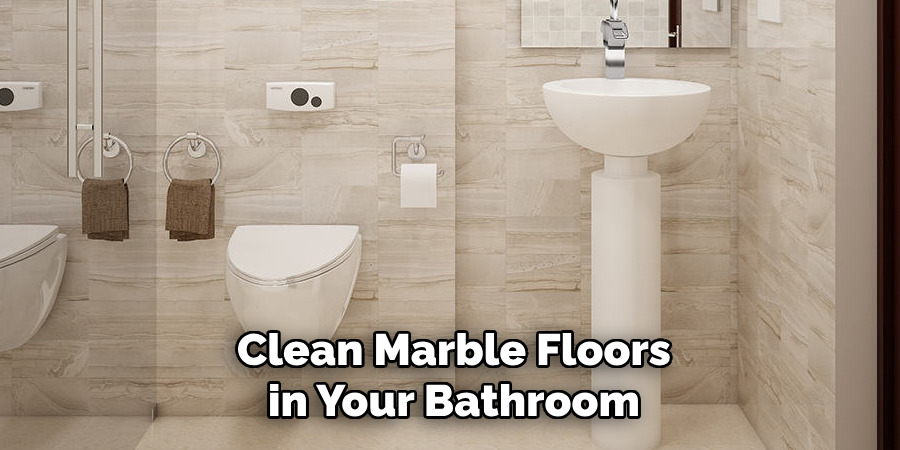
Additional Tips and Tricks to Clean Marble Floors in Bathrooms
- If your marble floors have stubborn stains, make a paste using baking soda and water. Apply the paste to the stain and let it sit for 24 hours before wiping it off with a damp cloth. This will help lift the stain without damaging the marble.
- For tough grime and soap scum buildup, use a solution of equal parts water and white vinegar. Spray the solution onto the affected area and let it sit for 10-15 minutes before scrubbing with a soft-bristled brush. Rinse off with water and dry with a clean cloth. This method is effective in removing buildup without causing damage to the marble.
- To prevent mold and mildew growth on marble floors, regularly clean them with a solution of warm water and mild dish soap. Avoid using harsh chemicals as they can cause discoloration and damage to the marble surface.
- Invest in a good-quality sealant for your marble floors. Sealants protect the marble from stains and damage, making it easier to maintain and clean in the long run.
- When cleaning marble floors, use a soft mop or cloth to avoid scratching the surface. Avoid using abrasive materials such as steel wool or harsh scrubbing brushes.
- Wipe up spills immediately to prevent them from seeping into the pores of the marble and causing stains.
- Use doormats at the entrances of your bathroom to prevent dirt and debris from being tracked onto the marble floors, which can cause scratches and damage over time.
- Avoid using acidic or abrasive cleaners on marble floors, as they can etch and damage the surface. Stick to mild, non-abrasive cleaners for regular maintenance.
- Consult a professional marble cleaner for stubborn stains that won’t come off with regular cleaning methods. They have the expertise and proper equipment to safely remove tough stains without damaging your marble floors.
- Consider using rugs or mats in high-traffic areas of your bathroom, such as near the shower or sink. This will provide extra protection for your marble floors and make cleaning easier.
- Regularly dust and sweep your marble floors to prevent dirt and debris from scratching the surface. This will also help to maintain its natural shine.
- Lastly, be gentle with your marble floors and avoid using heavy objects or dragging furniture across them. Take precautionary measures to protect your floors, such as using felt pads under furniture legs.
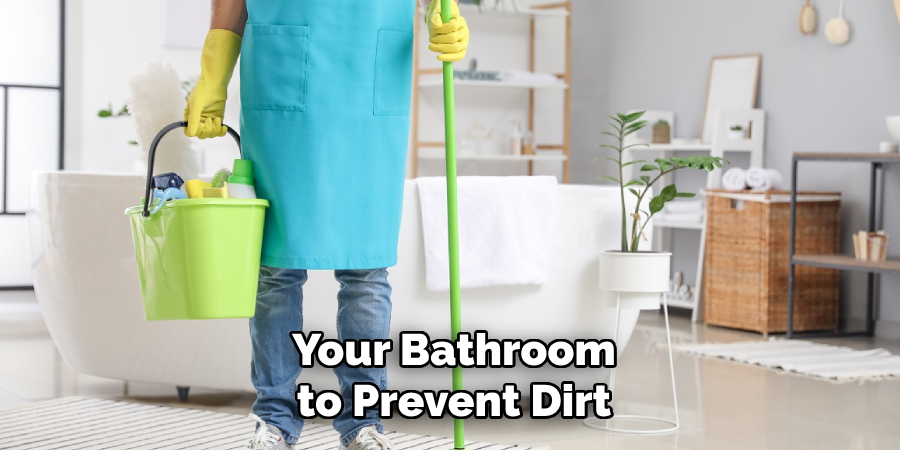
Following these additional tips and tricks will help keep your marble floors pristine for years to come. Regular maintenance and care are key to preserving the beauty of your bathroom’s marble floors. With the right techniques, you can enjoy a clean and elegant bathroom without worrying about damaging your precious marble floors. So, make sure to follow these tips and tricks for a sparkling, clean marble bathroom floor. Happy cleaning!
Things You Should Consider to Clean Marble Floors in Bathrooms
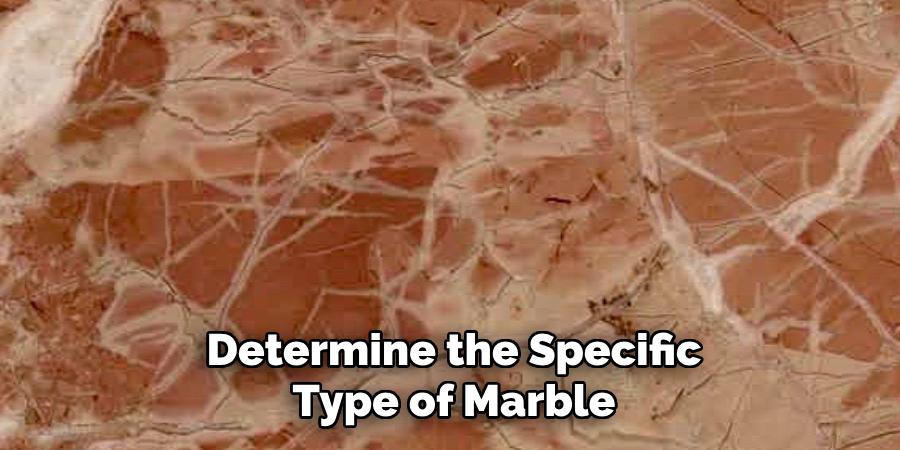
- The first thing to consider when cleaning marble floors in bathrooms is the type of marble used. Various types of marble have different levels of durability, porosity, and reaction to certain chemicals. Make sure to research and determine the specific type of marble in your bathroom before beginning any cleaning process.
- Regularly cleaning and maintaining marble floors prevents damage and preserves their natural beauty. This includes using a soft mop or cloth to remove dust and debris daily and regularly sweeping or vacuuming.
- Avoid using harsh chemicals or abrasive cleaners on marble floors, as they can damage and dull the surface. Instead, opt for gentle cleaning solutions specifically designed for marble.
- When spills or stains occur on marble floors, it is important to address them immediately. Blot the spill with a soft cloth or paper towel rather than rubbing it, potentially causing damage.
- Consider using a pH-neutral cleaner specifically designed for marble surfaces to remove tough stains or grime buildup. These cleaners are safe and will effectively remove any stubborn stains without damaging the marble.
- Marble floors should be sealed regularly to protect them from stains and etching. This should be done every 6-12 months, depending on the amount of foot traffic and bathroom use.
- When cleaning marble floors, always remember to work in small sections and rinse each area thoroughly before moving on. This will prevent any cleaners or dirt from drying on the surface and potentially causing damage.
- When cleaning marble floors, use a soft mop or cloth to avoid scratches and damage. Avoid using abrasive tools or scrubbers that can scratch the surface.
- In addition to regular cleaning and maintenance, consider implementing preventative measures such as using coasters for drinks and placing mats at entryways to catch dirt and debris.
- Finally, consider hiring a professional to clean and maintain your marble floors every few years. This will ensure they remain in top condition and can help prevent potential damage or issues.
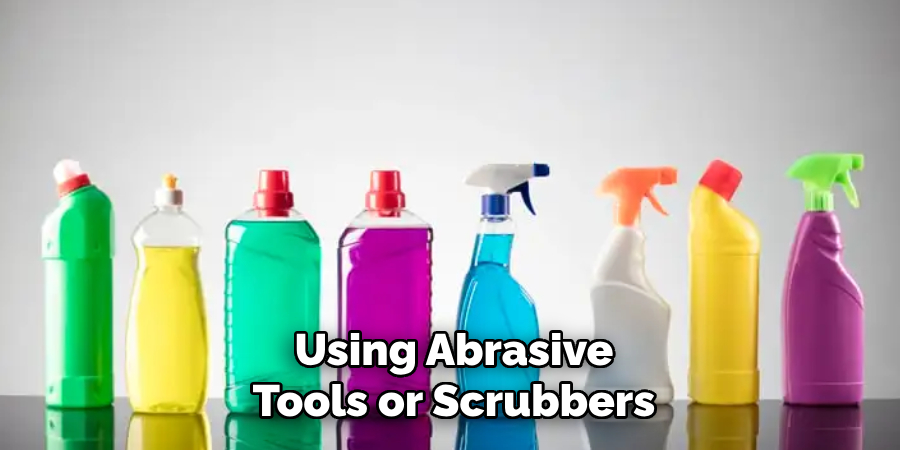
Following these considerations will help ensure that your marble floors in the bathroom remain clean and beautiful for years to come. Remember to always research and use appropriate cleaning products and address any spills or stains immediately. With proper care and maintenance, you can enjoy the timeless elegance of marble in your bathroom for a long time. So go ahead and give those marble floors some love! Happy cleaning!
Troubleshooting Common Issues to Clean Marble Floors in Bathrooms
1. Stains on Marble Floors:
Due to their porous nature, marble floors are highly vulnerable to staining. When liquids or certain substances, such as coffee, wine, or acidic solutions, come in contact with them, they can leave behind stubborn stains that are difficult to remove.
To prevent stains on your marble floors, cleaning up any spills immediately is important. Use a soft cloth and gentle cleaning solution to blot away the spill, rather than wiping it, as this can spread the stain and make it even more difficult to remove. Additionally, avoid using harsh or acidic cleaning products on marble floors.
2. Scratches on Marble Floors:
Marble floors are also susceptible to scratches from heavy furniture, shoes, and other sharp objects. To avoid scratches on your marble floors, place protective mats or felt pads under furniture legs and avoid dragging heavy objects across the floors. If scratches do occur, they can often be buffed out using a marble polishing powder and a soft cloth.
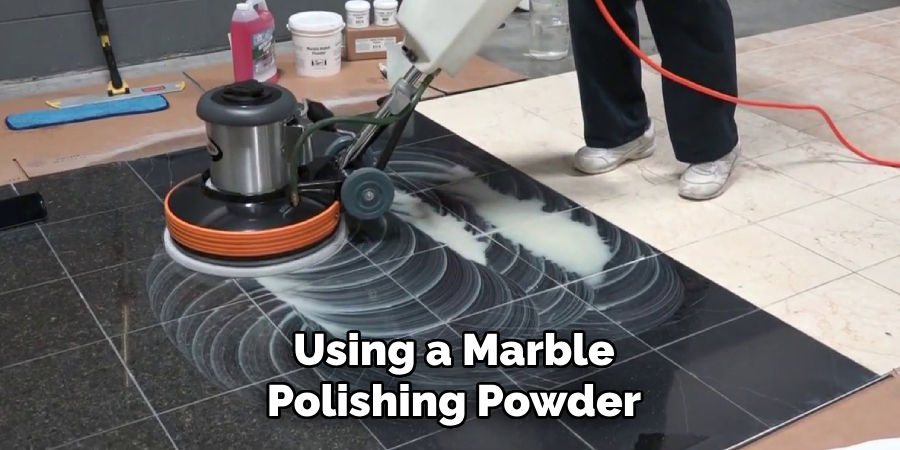
3. Dullness on Marble Floors:
Over time, marble floors can lose their shine due to daily wear and tear. This is especially common in high-traffic areas such as bathrooms. To restore the shine to your marble floors, use a marble polishing powder and buff with a soft cloth. You can also hire a professional stone restoration company for more intensive treatments.
4. Etching on Marble Floors:
Etching occurs when acidic substances come in contact with marble floors and cause the surface to become dull or pitted. This is a common issue in bathrooms where products such as toothpaste and hair products may contain acidic ingredients. To prevent etching, be mindful of what comes into contact with your marble floors and clean up any spills immediately.
If etch marks exist, you can buff them with marble polishing powder. If the damage is severe, professional stone restoration may be necessary.
5. Discoloration on Marble Floors:
Discoloration can occur on marble floors for various reasons, such as exposure to sunlight, water damage, or improper cleaning products. To prevent discoloration, avoid placing rugs or furniture that may block natural light from reaching the marble floors. Also, regularly clean and maintain your marble floors using gentle cleaning products specifically designed for marble.
If discoloration occurs, you can use a marble stain remover or hire a professional stone restoration company for more intensive treatments.
6. Cracks on Marble Floors:
Cracks in marble floors can be caused by heavy impact or shifting foundations. While small cracks may be repaired using a marble filler and sealant, larger cracks often require professional repair. Addressing any underlying structural issues and avoiding placing heavy objects or furniture in the affected area is important to prevent further cracking.
In addition to these common issues, regularly cleaning and sealing your marble floors can also help maintain their beauty and longevity. Remember to always use gentle cleaning products specifically designed for marble, and avoid using abrasive materials such as steel wool or harsh chemicals that can damage the surface. With proper care and maintenance, your marble floors will continue to shine for years to come. So, be mindful of their vulnerabilities and take necessary precautions to avoid any potential issues. Enjoy the luxurious look and feel of marble in your bathroom! Happy cleaning!
Conclusion
Knowing how to clean marble floors in bathrooms is essential for maintaining the beauty and longevity of your floors. By following these simple steps, you can easily remove dirt, stains, and grime from your marble floors without damaging them. Always test any new cleaning products or methods on a small, inconspicuous area before using them on the entire floor.
Regularly cleaning and sealing your marble floors will not only keep them looking shiny and new, but it will also protect them from potential damage. With proper care and maintenance, your marble floors can continue adding elegance and value to your bathroom for years.

